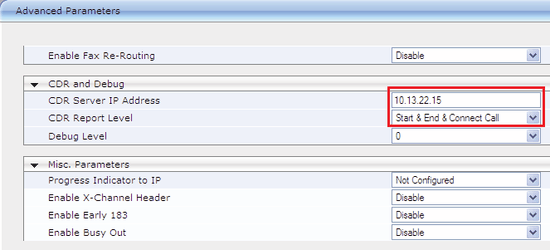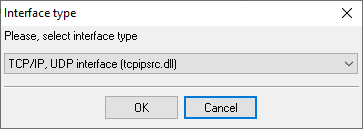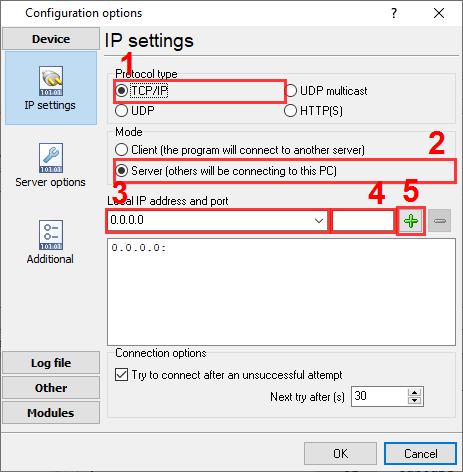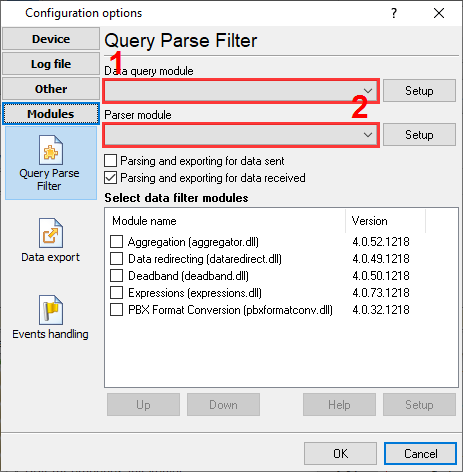AudioCodes VoIP Gateway - SMDR/CDR call logging & accounting
This data is being extracted with help of the "Advanced PBX Data Logger" software only. It may not be applicable for other software titles.
Configuring CDR
Note: For CDR reporting, you must also enable the Syslog feature.
1. Open the "Advanced Parameters" page (Configuration tab > VoIP menu > SIP Definitions submenu > Advanced Parameters).
2. Under the CDR and Debug group, perform the following:
a. In the "CDR Server IP Address" field, enter the IP address of the CDR server to where the device sends the CDR logs.
b. From the "CDR Report Level" drop-down list, select when the CDR"s are generated and sent to the CDR server:
[0] None = CDRs are not used (default).
[1] End Call = CDR is sent to the Syslog server at the end of each call.
[2] Start & End Call = CDR report is sent to Syslog server at the start and end of each call.
[3] Connect & End Call = CDR report is sent to the Syslog server at connection and at the end of each call.
[4] Start & End & Connect Call = CDR report is sent to the Syslog server at the start, at connection, and at the end of each call.
Note: If no IP address is defined, the CDR logs are sent to the Syslog server.

Configuring Advanced PBX Data Logger as a TCP server
Advanced PBX Data Logger should be configured to the TCP server mode and listen on 0.0.0.0:4000 (see below). The IP address 0.0.0.0 allows receiving data from all network connections on your computer. The port number should match the value from the SMDR settings in your AudioCodes VoIP Gateway.
1. Add a new configuration with the TCP data source (if you didn't it before).

2. Configure the TCP settings as shown below.

4000
4000
Selecting the correct parser for AudioCodes VoIP Gateway

AudioCodes VoIP Gateway
AudioCodes VoIP Gateway
Data items
| Description | Data type | Column name |
|---|---|---|
| Call type | string | CALL_TYPE |
| Call time | datetime | CALL_TIME |
| Connect time | datetime | CONNECT_TIME |
| Release time | datetime | RELEASE_TIME |
| Ring | datetime | RING |
| Cid Port Number | string | EXT |
| Call Identifier | string | FLAG6 |
| Trunk | string | TRUNK |
| Selected B-Channel | string | FLAG5 |
| Conference ID | string | FLAG4 |
| Trunk group | string | FLAG3 |
| Endpoint Type | string | ENDPOINT_TYPE |
| Call Originator | string | ACC |
| Direction | string | DIRECTION |
| Source IP Address | string | FLAG1 |
| Destination IP Address | string | FLAG2 |
| Source Phone Number Type | string | SRC_TON |
| Source Phone Number Plan | string | SRC_NPI |
| Source Phone Number | string | CALLER_PHONE |
| Destination Phone Number Type | string | DEST_TON |
| Destination Phone Number Plan | string | DEST_NPI |
| Destination Phone Number | string | DIALED_PHONE |
| Call duration (sec) | integer | CALL_DURATION_S |
| Call duration | datetime | CALL_DURATION |
| Coder | string | CODER |
| Packet Interval | string | INTRV |
| RTP IP Address | string | RTP_IP |
| RTP Port | string | RTP_PORT |
| Initiator of Call Release | string | TERM_SIDE |
| Termination Reason | string | TERM_REASON |
| Fax Transaction during the Call | string | FAX |
| Number of Incoming Packets | string | PACKETS_IN |
| Number of Outgoing Packets | string | PACKETS_OUT |
| Local Packet Loss | string | PACKETS_LOSS |
| Number of Outgoing Lost Packets | string | PACKETS_LOSS_REMOTE |
| Unique RTP ID | string | RTP_ID |
| RTP Delay | string | RTP_DELAY |
| RTP Jitter | string | RTP_JITTER |
| Local RTP SSRC | string | RTP_SSRC |
| Remote RTP SSRC | string | RTP_SSRC_REMOTE |
| Redirect Reason | string | REDIR_REASON |
| Redirection Phone Number Type | string | REDIR_TON |
| Number of Generated Metering Pulses | string | PULSES |
| Redirection Phone Number Plan | string | REDIR_NPI |
| Redirection Phone Number | string | REDIR_NUMBER |
Interested in reports for PBX usage?
Our offering includes the PBX Reports utility with manual, scheduled, and email report capabilities, a built-in web server, and additional features. You can establish your call accounting application for AudioCodes VoIP Gateway. Check our PBX Reports utility.
Want PBX call logs in a database?
As a standard feature, the logger is designed to capture and export SMDR or CDR data in real-time to your database. Check our article about call logging to a database.
AudioCodes VoIP Gateway related connection settings
AudioCodes SBCAudioCodes Mediant 1000
Australia Mobile (CSV)
Avaya (59 Chars Output Format ACM 4.0)
Quick jump to the connection settings for other PBXs or connection formats ↴
Note: Products and companies mentioned here are used only for definition and identification purposes and can be trademarks and/or registered trademarks of the respective companies.
Related topics: Advanced PBX Data Logger
hereCall logging Call accounting SMDR to SQL SMDR Listener Cables and signals